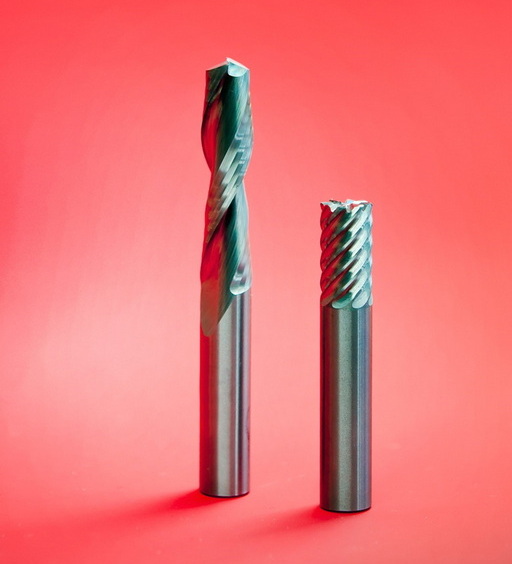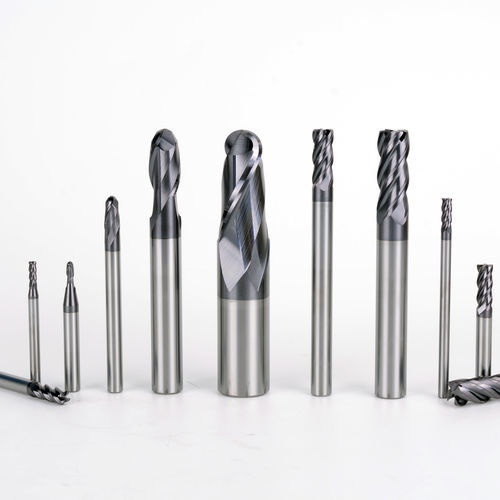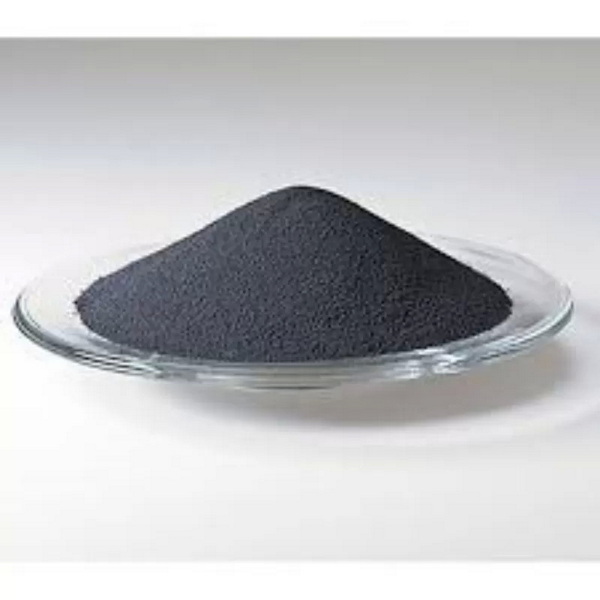Content Menu
● Introduction to Tungsten Carbide
● The Role of Cobalt in Tungsten Carbide
>> Why Is Cobalt Used?
>> Drawbacks of Cobalt as a Binder
● What Does "Cobalt Free" Mean?
>> Definition
>> Why Go Cobalt Free?
● Properties and Benefits of Cobalt-Free Tungsten Carbide
>> Key Properties
>> Benefits Over Cobalt-Containing Tungsten Carbide
● Cobalt-Free vs. Cobalt-Containing Tungsten Carbide: A Comparison
● How to Identify Genuine Cobalt-Free Tungsten Carbide
>> Tips for Buyers
>> Additional Buyer Advice
● Applications of Cobalt-Free Tungsten Carbide
>> Jewelry
>> Industrial Uses
>> Emerging Uses
● Environmental and Health Considerations
>> Cobalt-Related Concerns
>> Advantages of Cobalt-Free Alternatives
● The Future of Cobalt-Free Tungsten Carbide
>> Innovations on the Horizon
● Conclusion
● FAQ
>> 1. What is the difference between cobalt-free and cobalt-containing tungsten carbide?
>> 2. Is cobalt-free tungsten carbide safe for people with sensitive skin?
>> 3. How can I tell if a tungsten carbide ring is cobalt free?
>> 4. Will cobalt-free tungsten carbide rings scratch or tarnish over time?
>> 5. Why are some tungsten carbide rings cheaper than others?
● Citations:
Tungsten carbide has become a material of choice in modern jewelry and industrial applications due to its exceptional hardness, durability, and resistance to wear. However, not all tungsten carbide products are created equal. A crucial distinction lies in whether the tungsten carbide is cobalt free. This article explores what genuine tungsten carbide cobalt free means, why it matters, and how it compares to cobalt-containing alternatives. We'll also address common questions and provide visual guides to help you understand this remarkable material.

Introduction to Tungsten Carbide
Tungsten carbide is a compound composed of equal parts tungsten and carbon atoms, forming a material renowned for its incredible hardness, high melting point, and impressive resistance to scratching and wear. In its purest form, tungsten carbide (chemical formula WC) appears as a fine gray powder, which can be pressed and sintered into various shapes for use in tools, jewelry, and more.
Tungsten carbide's unique structure and properties make it ideal for demanding applications, from industrial cutting tools to elegant jewelry. Its popularity continues to grow as consumers and manufacturers seek materials that offer both performance and style.
The Role of Cobalt in Tungsten Carbide
Why Is Cobalt Used?
In most practical applications, tungsten carbide is not used in its pure form. Instead, it is combined with a binder metal to create a composite known as cemented carbide or hardmetal. Cobalt is the most common binder, serving several purposes:
- Binding Agent: Cobalt holds tungsten carbide grains together during the sintering process.
- Toughness: It improves the toughness of the otherwise brittle tungsten carbide, reducing the likelihood of cracking or chipping.
- Workability: Cobalt allows for easier shaping and forming during manufacturing.
- Adjustable Properties: The proportion of cobalt can be varied (typically 3%–30% by weight) to balance hardness and toughness for specific uses.
Drawbacks of Cobalt as a Binder
Despite its advantages, cobalt is not without its downsides. Cobalt can cause skin irritation, allergic reactions, and even corrosion over time, especially when exposed to sweat or chemicals. These issues are particularly problematic in jewelry applications, where the material is in direct contact with the skin.
What Does "Cobalt Free" Mean?
Definition
A cobalt-free tungsten carbide product is one where cobalt is not used as the binder. Instead, alternative binders such as nickel, nickel-chromium alloys, or iron are used to hold the tungsten carbide particles together. This results in a material that retains the desirable properties of tungsten carbide while avoiding the drawbacks associated with cobalt.
Why Go Cobalt Free?
- Hypoallergenic: Cobalt can cause skin irritation or allergic reactions in some people. Cobalt-free alternatives are hypoallergenic and safer for sensitive skin.
- Corrosion Resistance: Cobalt-containing rings may develop oxidation spots and corrosion over time, which cannot be polished away.
- Longevity: Cobalt-free tungsten carbide maintains its luster and appearance for a lifetime, often backed by lifetime guarantees.
Properties and Benefits of Cobalt-Free Tungsten Carbide
Key Properties
- Extreme Hardness: Second only to diamond on the Mohs scale (Tungsten carbide: 9; Diamond: 10).
- Scratch Resistance: Highly resistant to scratching—only materials as hard as diamond can mar it.
- Permanent Polish: Maintains a lustrous, polished appearance indefinitely.
- Hypoallergenic: Safe for all skin types, will not cause discoloration or rashes.
- Corrosion Resistance: Will not rust, tarnish, or react with most chemicals.
- Density and Weight: Tungsten carbide is noticeably heavier than most metals, giving jewelry a substantial and luxurious feel.
Benefits Over Cobalt-Containing Tungsten Carbide
- No Skin Reaction: Will not turn your finger green or cause irritation.
- No Oxidation Spots: Remains untarnished and beautiful over time.
- Longer Lasting: Backed by lifetime guarantees from reputable manufacturers.
- Biocompatibility: Preferred for medical and dental tools due to the absence of cobalt-related toxicity.
Cobalt-Free vs. Cobalt-Containing Tungsten Carbide: A Comparison
| Feature | Cobalt-Free Tungsten Carbide | Cobalt-Containing Tungsten Carbide |
| Binder Material | Nickel, iron, or alloys | Cobalt |
| Hypoallergenic | Yes | No (can cause skin reactions) |
| Corrosion Resistance | Excellent | Poor (prone to oxidation spots) |
| Durability | Outstanding | Good, but can degrade over time |
| Lifetime Guarantee | Common | Rare |
| Color Stability | Permanent | May discolor |
| Popular in Jewelry | Increasingly preferred | Less desirable |
| Environmental Impact | Lower | Higher (due to cobalt mining) |
| Biocompatibility | Excellent | Moderate to poor |
How to Identify Genuine Cobalt-Free Tungsten Carbide
Tips for Buyers
- Check the Label: Reputable sellers clearly state if their tungsten carbide is cobalt free.
- Ask About the Binder: Confirm whether nickel or another alternative is used instead of cobalt.
- Warranty: Look for lifetime guarantees—these are rarely offered for cobalt-containing rings.
- Hypoallergenic Claims: Products marketed as hypoallergenic are usually cobalt free.
- Professional Testing: For absolute certainty, professional tests like X-ray diffraction can verify the binder used.
Additional Buyer Advice
- Brand Reputation: Purchase from established brands known for quality and transparency.
- Customer Reviews: Check for feedback regarding skin comfort and long-term durability.
- Certifications: Some jewelers provide certificates guaranteeing cobalt-free content.
Applications of Cobalt-Free Tungsten Carbide
Jewelry
- Wedding Bands: Popular for their durability, scratch resistance, and hypoallergenic properties.
- Fashion Rings: Available in various styles and finishes, maintaining their shine for years.
- Bracelets and Accessories: Increasingly used in men's and women's bracelets, cufflinks, and pendants.
Industrial Uses
- Cutting Tools: Cobalt-free variants are used where corrosion resistance is critical or cobalt's magnetic properties are undesirable.
- Medical Devices: Preferred in applications requiring biocompatibility, such as surgical tools and dental instruments.
- Aerospace and Defense: Used in components where both strength and non-magnetic properties are required.
Emerging Uses
- Wearable Technology: Cobalt-free tungsten carbide is being explored for use in smart rings and other wearable devices.
- Luxury Goods: Used in high-end watches and pens for its unique combination of aesthetics and performance.

Environmental and Health Considerations
Cobalt-Related Concerns
- Mining Impact: Cobalt mining can have significant environmental consequences, including habitat destruction and pollution.
- Health Risks: Occupational exposure to cobalt dust can cause respiratory issues.
- Toxicity: Long-term exposure to cobalt, even in small amounts, may pose health risks.
Advantages of Cobalt-Free Alternatives
- Safer for Consumers: No risk of skin irritation or allergic reactions.
- Reduced Environmental Impact: Avoids the ethical and ecological issues associated with cobalt mining.
- Ethical Sourcing: Cobalt-free products avoid contributing to the problematic cobalt supply chain, which has been linked to human rights abuses in some regions.
The Future of Cobalt-Free Tungsten Carbide
As awareness of health, ethical, and environmental issues grows, the demand for cobalt-free tungsten carbide is expected to rise. Manufacturers are investing in research to further improve the performance of nickel and iron binders, making them even more competitive with traditional cobalt-based materials.
Innovations on the Horizon
- Advanced Binder Alloys: New alloy combinations are being developed to enhance toughness and reduce brittleness without sacrificing hypoallergenic properties.
- Eco-Friendly Production: Efforts are underway to make the entire tungsten carbide manufacturing process more sustainable, from raw material sourcing to final product finishing.
- Customization: As technology advances, expect to see more personalized and intricate designs in cobalt-free tungsten carbide jewelry, meeting the needs of diverse consumers.
Conclusion
Genuine tungsten carbide cobalt free represents the pinnacle of modern material engineering for both jewelry and industrial applications. By eliminating cobalt as a binder, manufacturers produce a hypoallergenic, corrosion-resistant, and exceptionally durable product that maintains its beauty and function for a lifetime. Whether you're selecting a wedding band or a precision tool, choosing cobalt-free tungsten carbide ensures you benefit from the material's best qualities without the risks associated with cobalt.
As consumer awareness grows and technology advances, cobalt-free tungsten carbide is set to become the standard in applications where safety, longevity, and environmental responsibility are paramount. When shopping for tungsten carbide products, always verify that they are cobalt free to ensure you receive the best in quality, safety, and sustainability.

FAQ
1. What is the difference between cobalt-free and cobalt-containing tungsten carbide?
Cobalt-free tungsten carbide uses alternative binders like nickel or iron, making it hypoallergenic and resistant to corrosion. Cobalt-containing tungsten carbide, while tough, can cause skin irritation and develop oxidation spots over time.
2. Is cobalt-free tungsten carbide safe for people with sensitive skin?
Yes, cobalt-free tungsten carbide is hypoallergenic and will not cause rashes, itching, or discoloration, making it ideal for people with sensitive skin.
3. How can I tell if a tungsten carbide ring is cobalt free?
Check the product description or ask the seller directly. Reputable brands proudly advertise their rings as cobalt free. Look for lifetime guarantees and hypoallergenic claims as additional indicators.
4. Will cobalt-free tungsten carbide rings scratch or tarnish over time?
No, cobalt-free tungsten carbide is extremely scratch resistant and will not tarnish, corrode, or lose its polish, even after years of wear.
5. Why are some tungsten carbide rings cheaper than others?
Lower-priced tungsten carbide rings often use cobalt as a binder, which reduces manufacturing costs but compromises quality, durability, and safety. Cobalt-free rings are more expensive due to higher-quality materials and better craftsmanship.
Citations:
[1] https://www.tungstenringsco.com/page/cobalt-free-tungsten-rings
[2] https://www.tungstenjeweler.com/grooved-tungsten-ring-9mm/
[3] https://www.tungstenworld.com/pages/faq
[4] https://usajewelrylv.com/products/4mm-faceted-cobalt-free-tungsten-carbide-comfort-fit-wedding-band-ring-size-5-5-5-6-6-5-7-7-5-8-8-5-9-9-5-10-10-5-11-11-5-12-12-5-13-14-15
[5] https://www.zhongbocarbide.com/does-genuine-tungsten-carbide-have-cobalt.html
[6] https://martinnagel.com/pages/tungsten-faq
[7] https://www.titanjewellery.co.uk/Mens/Tungsten-FAQ.html
[8] https://www.tungstenringsco.com/faq
[9] https://www.tungstenjeweler.com/faceted-tungsten-ring-9mm/
[10] https://www.etsy.com/market/cobalt_free_tungsten
[11] https://usajewelrylv.com/products/9mm-tungsten-carbide-comfort-fit-hammered-wedding-band-ring-cobalt-free-men-women-size-7-7-5-8-8-5-9-9-5-10-10-5-11-11-5-12-12-5-13-14-15
[12] https://www.pinterest.com/pin/8mm-blue-tungsten-carbide-ring-meteorite-inlay-domed-high-polished-wedding-band-comfort-fit-8--629167010475923181/
[13] https://www.tungstenrepublic.com/Tungsten-Carbide-Rings-FAQ.html
[14] https://www.menstungstenonline.com/frequently-asked-questions.html
[15] https://va-tungsten.co.za/faqs/
[16] https://theartisanrings.com/pages/tungsten-rings-faqs
[17] https://www.everything-wedding-rings.com/how-can-you-tell-between-tungsten-cobalt-and-tungsten-nickel-rings.html
[18] https://www.tungstenaffinity.com/Polished-Tungsten-Ring-Brushed-Center-p/sil-psilsl.htm
















